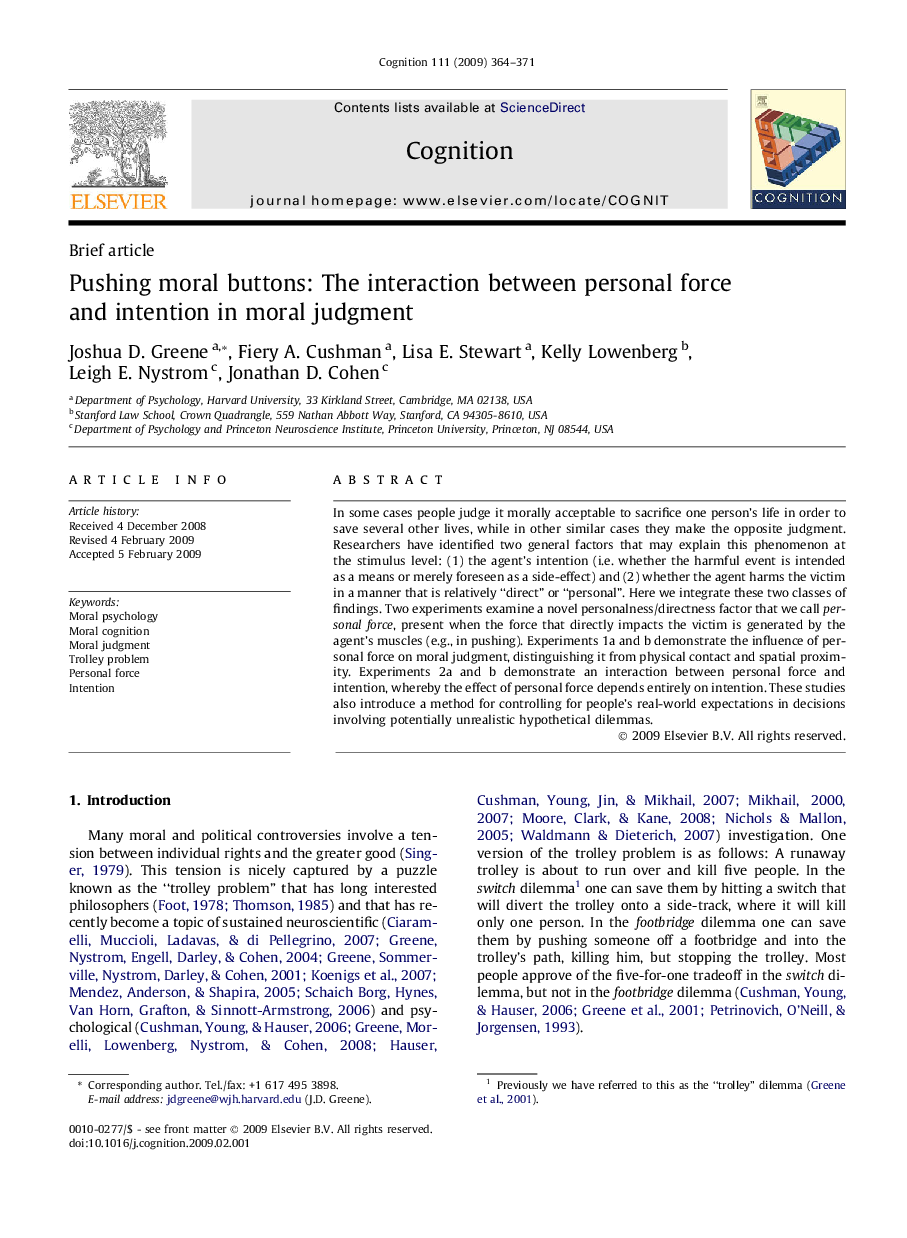| Article ID | Journal | Published Year | Pages | File Type |
|---|---|---|---|---|
| 10457872 | Cognition | 2009 | 8 Pages |
Abstract
In some cases people judge it morally acceptable to sacrifice one person's life in order to save several other lives, while in other similar cases they make the opposite judgment. Researchers have identified two general factors that may explain this phenomenon at the stimulus level: (1) the agent's intention (i.e. whether the harmful event is intended as a means or merely foreseen as a side-effect) and (2) whether the agent harms the victim in a manner that is relatively “direct” or “personal”. Here we integrate these two classes of findings. Two experiments examine a novel personalness/directness factor that we call personal force, present when the force that directly impacts the victim is generated by the agent's muscles (e.g., in pushing). Experiments 1a and b demonstrate the influence of personal force on moral judgment, distinguishing it from physical contact and spatial proximity. Experiments 2a and b demonstrate an interaction between personal force and intention, whereby the effect of personal force depends entirely on intention. These studies also introduce a method for controlling for people's real-world expectations in decisions involving potentially unrealistic hypothetical dilemmas.
Related Topics
Life Sciences
Neuroscience
Cognitive Neuroscience
Authors
Joshua D. Greene, Fiery A. Cushman, Lisa E. Stewart, Kelly Lowenberg, Leigh E. Nystrom, Jonathan D. Cohen,
